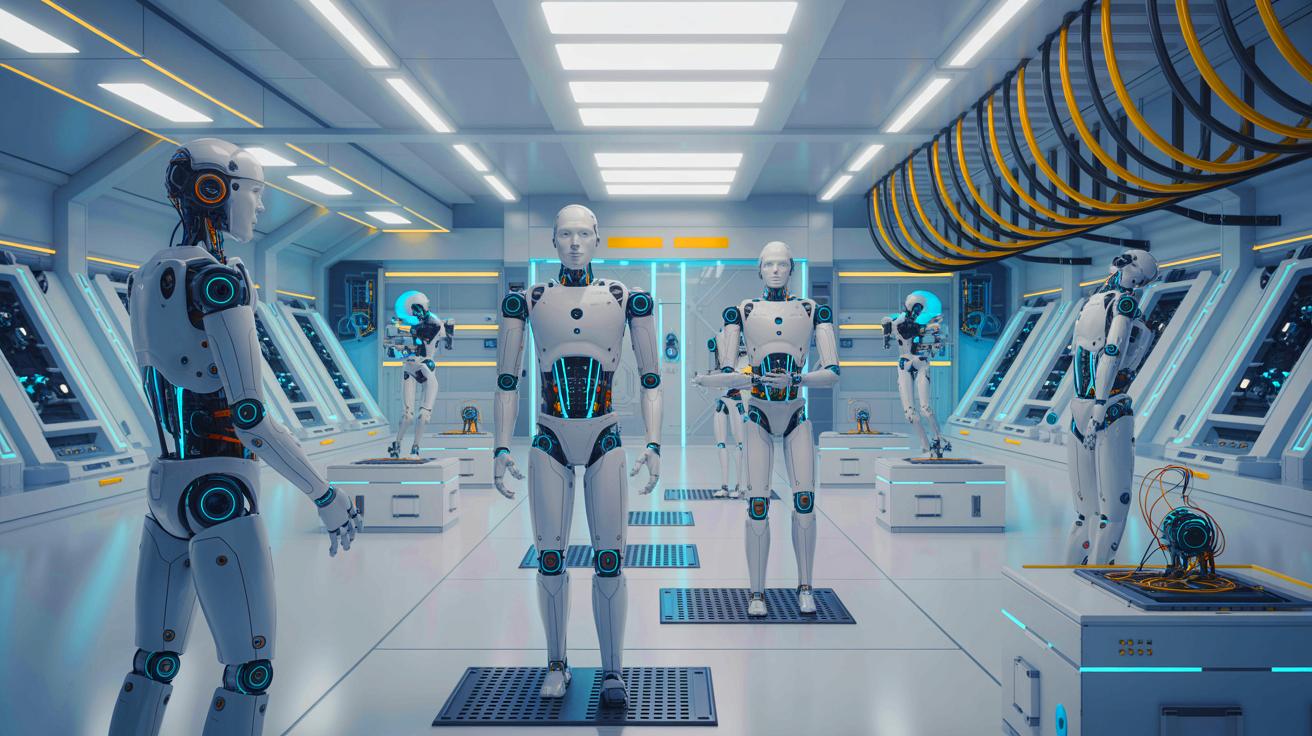In a surprising and potentially game changing development, Chinese robotics start up AgiBot has announced plans to acquire a controlling stake in Swancor Advanced Materials, a Taiwan based wind blade titan. This news has sent shockwaves through both the energy and robotics industries. The move isn’t just a merger of two companies it’s a fusion of two high impact sectors: next gen robotic automation and advanced composite materials.
AgiBot’s strategic push into Swancor’s territory could mark a fundamental shift in how materials are sourced, manufactured, and deployed in renewable energy projects. Experts are calling it a “new phase in vertical integration,” where robotics will not just assist, but lead in transforming the energy infrastructure of the future.
The Power Behind the Takeover: Who Is AgiBot?
Founded in Shenzhen, AgiBot has rapidly risen as one of the most formidable Tesla rivals in the autonomous robotics space. The company specializes in AI powered robotic manufacturing systems designed to outperform traditional automation in terms of speed, flexibility, and intelligence.
In the past five years, AgiBot has expanded its portfolio from warehouse bots to fully autonomous robotic fleets capable of assembling large scale structures like wind turbine blades without human intervention.
AgiBot’s Partnership with SinoPower
A recent collaboration with SinoPower Energy Group showcased AgiBot’s ability to cut down wind turbine manufacturing time by 45% using its proprietary “AGX Swarm” robotics platform. Engineers reported a significant drop in material waste and a 30% improvement in production efficiency.
This success emboldened AgiBot to consider Swancor, which specializes in producing lightweight, corrosion resistant resins used in wind turbine blades and electric vehicles.
Why Swancor? Strategic Value in Clean Energy Materials
Swancor’s reputation as a top supplier of composite materials makes it a prime target. The company provides epoxy resin systems critical to the structure and durability of wind turbine blades. In an era where wind power is booming especially in Southeast Asia controlling Swancor gives AgiBot a powerful edge.
Dr. Ellen Zhou, Renewable Materials Analyst, “By taking over Swancor, AgiBot secures upstream access to high performance materials. This ensures supply chain security and opens doors for bespoke material design optimized for robotic assembly,” said Dr. Zhou. “It’s the type of vertical integration Tesla would envy.”
A Glimpse Into the Future of Robotics and Energy
The AgiBot wind blade takeover isn’t just about one company acquiring another. It’s about reimagining what the future of energy infrastructure looks like when robotics controls the process from start to finish.
AgiBot’s Vision: Full-Spectrum Automation in Clean Energy
AgiBot’s CEO, Liang Wei, envisions a future where wind farms are not just powered by clean energy but built by intelligent machines. “We don’t just want to supply robots,” said Wei at a recent tech summit. “We want our robots to design, build, and maintain the very tools that power the world. Swancor brings us one step closer to that reality.”
Risks and Rewards of the Takeover
While the potential is enormous, this move comes with significant risks. Swancor operates in a highly regulated market, and its Taiwanese base adds a layer of geopolitical complexity. Experts warn that foreign ownership of strategic materials companies can trigger regulatory scrutiny.
Henry Liu, Asia Pacific M&A Strategist
“AgiBot must tread carefully. Regulatory bodies in Taiwan and international investors will be watching closely. But if they succeed, AgiBot could set a new benchmark for industrial robotics applications,” Liu explained.
Swancor Engineer Reacts
A Swancor engineer, who requested anonymity, shared their thoughts. “We’ve always worked with traditional manufacturers. The idea of partnering with a robotics firm is both exciting and intimidating. But we’re already seeing prototypes come together faster than ever.”
The Tesla Parallel: Will Elon Musk Respond?
While Elon Musk’s Tesla continues to invest heavily in battery tech and AI, it hasn’t moved aggressively into wind energy or upstream material manufacturing. AgiBot’s move may pressure other players including Tesla to reconsider their strategy.
Industry insiders speculate whether Musk will seek a counter move, perhaps in offshore wind, to match AgiBot’s aggressive play.
Reducing Carbon, Increasing Efficiency
If successful, the AgiBot wind blade takeover could lead to greener manufacturing methods. Robots can optimize material use, reduce waste, and operate with high energy efficiency. “This could slash the carbon footprint of wind blade manufacturing by 20-30%,” said Dr. Liu Chen, a climate tech researcher at Tsinghua University.
A Defining Moment for Robotics in Clean Energy
AgiBot’s attempt to take over Swancor Advanced Materials is more than a headline it’s a paradigm shift. It shows how robotics is not just complementing the energy industry, but starting to redefine it from the ground up.
This AgiBot wind blade takeover may seem like one company making a strategic business move, but in truth, it represents the convergence of AI, materials science, and clean energy in a way the world has never seen before.
Whether the deal goes through or not, one thing is certain: the future of renewable energy will be built by robots.


1 thought on “AgiBot Wind Blade Takeover: How China’s Tesla Rival Is Using Robots to Dominate Clean Energy”